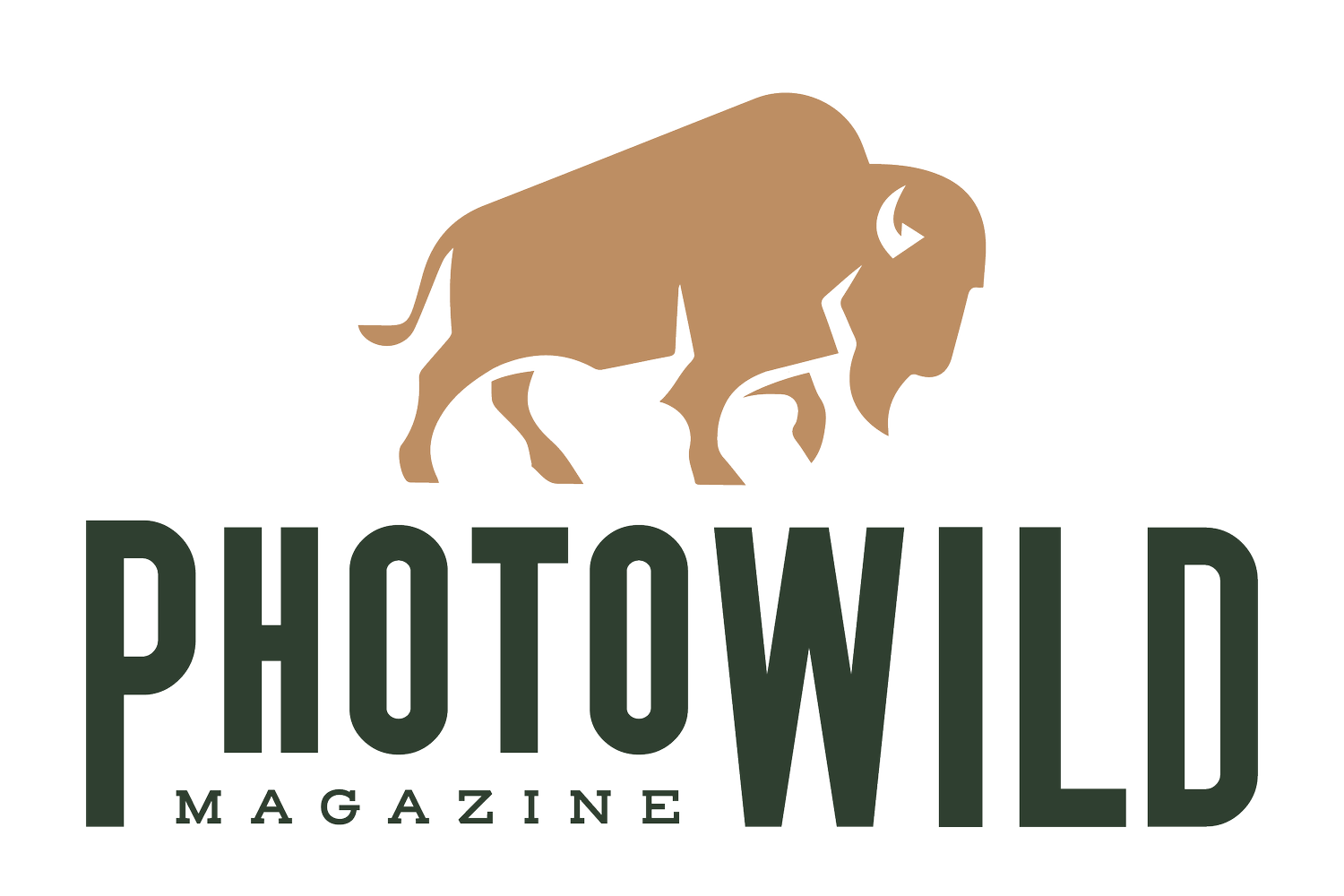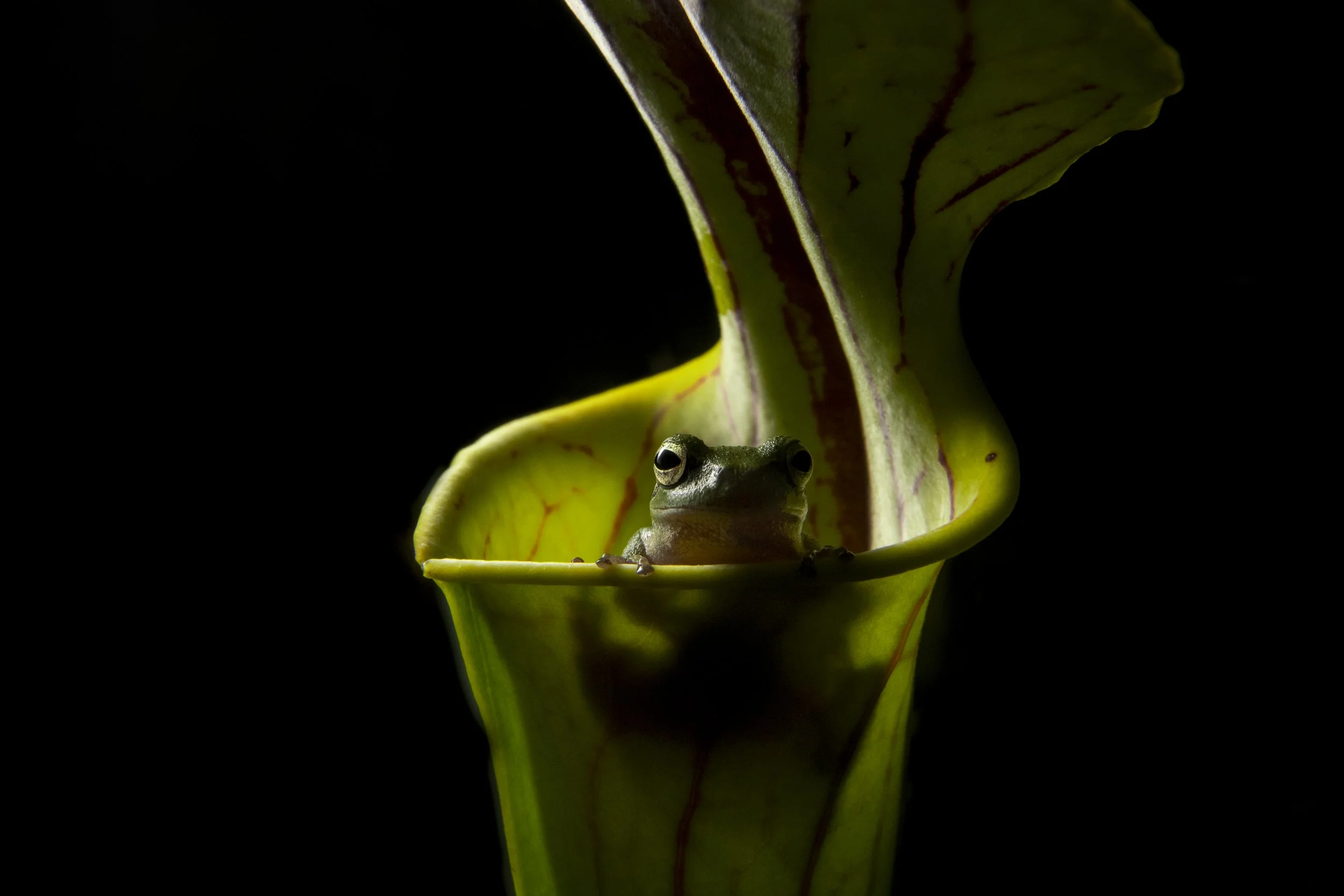One Flash
Photography
I feel like I’m lost inside of Joseph Conrad’s Heart of Darkness. This place is exotic. Hot as hell. And there is a grocery list of things that can go wrong. Adding to this, the topography has a split personality. Poccosin, savanna, repeat – ad infimum it would seem. The air in here is thick, the light low. The shade would come as relief if not for the heavy tax paid in blood to the relentless mosquitoes jockeying for position to thrust proboscises into my skin for a meal. While the males of this race feast upon the sweet nectar of nearby flowers, ladies prefer the red wine. Here be vampires.
Watch out for the boot sucking mud. The tangle of vines, thorns, the litany of evergreen shrubs species that interlock forming a veritable fortress a mile thick, and the occasional cypress knee to test your balance. In 1539, the chroniclers of the De Soto expedition wrote of a trackless wilderness near this place, one that took days to travel just a few miles. Men were bogged down in mud, drowned by the weight of armor, and they all nearly starved to death. Survival was as bleak, and the danger as extreme, as any ambush by local tribes. A classic poccosin experience if you ask me.
Stepping out of the swamp and into the savanna is as abrupt and shocking as stepping out of the Great Smoky Mountains into the not so great tourist trap of Gatlinburg, Tennessee. From dark humid jungle, to open and dry grasslands interspersed with longleaf pines in a park like setting - all within the span of a mere heartbeat.
This is the realm of fire, and species here begin to stretch the limits of imagination in their adaptations to this brutal fact. Consider the plants. The harshness of life in the longleaf pine savannas has tweaked and molded many into insect eating monsters. Several species of pitcher plants, for instance, can be seen with a cursory glance across the landscape – each with their own unique way in which to lure in unsuspecting insects to their sweet smelling, yet toxic brew, of digestive enzymes. In all, there are 17 different species of carnivorous plants here, including the Venus flytrap - an evolutionary rock star in this savage garden.
Trying not to roll an already bum ankle in the thick tussocks of wiregrass that so characterizes this habitat, I take note of the shocking array of life here. For a land that routinely undergoes a scorched earth policy, the botanical diversity is extraordinary. Several different species of orchids can be found blooming across this grassland right now. Spreading pogonia, grass pink, and a variety of different Spiranthes give the impression of some sort of grandiose Jackson Pollock painting with random explosions of vibrant colors splattered and tossed and sprinkled with abstract expression over the otherwise monochromatic green hue of the savanna in the spring.
This place drips with biological diversity. But it does so on a scale far smaller than what most tend to notice. We only see the large and the charismatic these days, as if the sheer size of a thing is the only way to compete for our ever-shrinking attention spans. But it’s the smaller majority that is, well, the majority.
Some 12,000 years ago, a comet exploded over top of the Laurentide Ice Sheet round about where the Great Lakes are today. The ice sheet was nearly 2 miles high and when the comet exploded, shrapnel from the ice was sent hurling for thousands of miles. The North American landscape bears countless scars from this event. But nowhere is this more evident than here along the coastal plain of North Carolina.
This was the event that drove species such as sabretooth cats and wooly mammoths extinct in North America. It wiped out the American cheetah, the American lion, short faced bears, and dire wolves. Before this event, America was filled to the brim with what we call super predators today. The place would have made the plains of Africa seem pretty tame. And then it didn’t.
Today, we call this this the Pleistocene Extinctions. And I am inside of one such impact crater.
It’s not hard to find something unique to photograph in a place like this. We won’t even get into the fact that a nesting colony of endangered red cockaded woodpeckers is just off stage right from where I’m standing – something like 37 different species of vertebrates depend upon this bird’s presence here to even live in this environment.
I’m after the predatory botanicals myself. The insectivorous, the carnivorous. I’ve suffered from a lifetime of fascination with these things.
And so, I find myself hugging the edges of two worlds that could not be more antithetical. On one side of me is a world dictated by fire. It’s dry. It’s hot. More Africa than North Carolina. Life here is sparse. The pine savannah is a wide-open grassland interspersed with towering longleaf pines every 50 feet or so. Biting flies swarm about you. On the other side of me, is a dense bog that ebbs and flows into denser swamp and then back to bog again. Mosquitoes. Mud. Joseph Conrad. And all that.
But it’s the strip of landscape that lies between these two habitats that interests me most. It’s the convergence of these two worlds, the overlap of fire and water, where suddenly the biodiversity explodes into a bewildering display of evolutionary marvels.
It’s called an ecotone – though the name is not exclusive to this particular situation. Anywhere you have two different habitat types that butt up against each other, you have an ecotone – a strip of landscape where the habitats converge and overlap ever so slightly. It is here, within this overlap, that species diversity is at its highest. And it is here where you will find some of the odder sorts that live in an ecosystem.
Though I may have threaded my way into this place by means of a Land Rover along a winding two track jeep trail composed of nothing more than deep white sand scraped out along the rim of these impact craters, the ecotones are no place for such heavy-footed travel. And so, I left the truck behind in the savannah and carry a large backpack full of gear as I explore.
This is macro territory and so my kit is made up of the following: Nikon Z9, Z6II, 15mm macro, 60mm macro, 105mm macro, 150mm macro, 200mm macro, 24-70mm wide angle zoom, an array of extension tubes that allow me to focus closer with the wide angle zoom, specialized sliders, flash bracket, 2 Nikon sb700 flash units, a telescoping flash extender, micro softbox, cords, batteries, and a bunch of other randomness. There is even a light stand strapped to my pack.
Of the lenses I am carrying, I could take just one of these and make do. But of the flash equipment, well this is really the indispensable part of the equation that I am unwilling to ever compromise on.
You see, flash is a critical part of my photography. And this isn’t just about macro photography either. This is mammals, birds, and even landscapes at times. If the essence of photography is light, being able to wield flash means that you have the means of taking control of the most important part of photography.
Despite how important flash is in so many different situations, let me start talking about this stuff with other photographers and chances are that most everyone’s eyes will begin to glaze over. It would be about like trying to explain tax laws to me. Of all the many aspects of photography, flash is by far the one theme that causes the most confusion, the most frustration, and even anxiety for many.
It should never be this way.
Flash is not difficult to master. The problem is just understanding the basic fundamentals of using flash. Sticking it on the hot shoe of your camera and simply firing away at your subject is, more often than not, going to produce disastrous results. It would be about like turning on your camera and shooting away in manual exposure without ever so much as looking at what your settings are, what your light meter says, or the histogram. And yet, this is most people’s experience with flash.
Uncompromising quality. Workshop level education. The Art & Science of wildlife photography at your finger tips.
Already a member? Sign In


